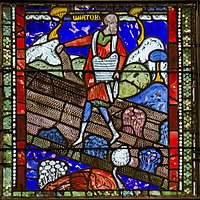
Photo from wikipedia
The promise of interreligious openness signalled by Vatican II’s Nostra Aetate (1965) has over the past 50 years required an ongoing conversation in the Church about the meaning and limits… Click to show full abstract
The promise of interreligious openness signalled by Vatican II’s Nostra Aetate (1965) has over the past 50 years required an ongoing conversation in the Church about the meaning and limits of that openness, its relationship to traditionally affirmed proclamation and evangelization, and its relevance in a world faced with daunting needs. In particular, the Catholic study of other religions has faced various challenges that may be categorized in light of three papal periods: the real even if cautious opening in the era of Paul VI; the difficult balance between a still deeper openness and a growing fear of relativism in the era of John Paul II and Joseph Ratzinger/Benedict XVI; and the era of Francis. The challenge to comparative theologians—like all other Catholic intellectuals—is now that of relevance, the need to put intellectual work at the service of the poor, in protection of the environment, and toward a promotion of interreligious peace. The work of learning continues, but in each era has taken on different nuances and been received differently.
Journal Title: Irish Theological Quarterly
Year Published: 2017
Link to full text (if available)
Share on Social Media: Sign Up to like & get
recommendations!